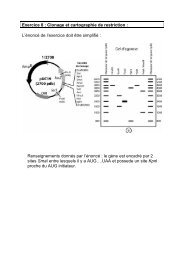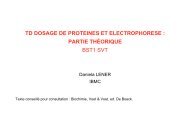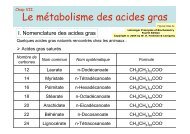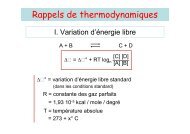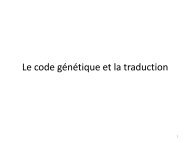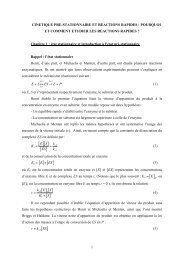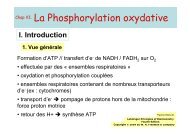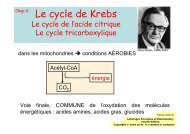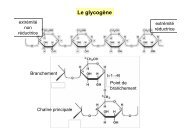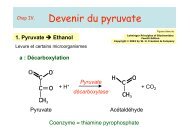Table Of Contents
Table Of Contents
Table Of Contents
Create successful ePaper yourself
Turn your PDF publications into a flip-book with our unique Google optimized e-Paper software.
Turn on the ThermoVac vacuum pump. The vacuum will pull the detergent solution<br />
from the beaker, through the cell and into the waste flask. Do not allow the waste flask to<br />
become full enough for liquid to be sucked into the ThermoVac’s vacuum pump, as this may<br />
cause damage.<br />
Once sufficient detergent solution has passed through the cell, remove the plastic tubing<br />
from the solution and placed into another beaker containing 100 ml or more of water for rinsing.<br />
After rinsing with water, remove the plastic tubing from the rinse water and allow time for the<br />
vacuum to drain the fluid out of the plastic tubing, then remove the cleaning apparatus from the<br />
cell and remove the remaining water from the cell using a long needle syringe.<br />
If this cleaning method is insufficient, fill the cell with ~5% LiquiNox and set the<br />
instrument to thermostat at 70°C for several hours. Be careful to cool the cells before removing<br />
the LiquiNox, as hot liquid may shatter the loading syringe.<br />
Syringe Cleaning:<br />
Conceptually, cleaning the syringe is similar to using the ThermoVac to clean the sample<br />
cell; the vacuum pulls liquid from a beaker, through the syringe, and into the waste beaker in the<br />
ThermoVac chamber. With the syringe in the filling hole, attach the filling tubing. You will<br />
need to line up the hole in the pipette with the hole at the top of the syringe. Spin the syringe<br />
assembly to find the hole, and then turn it so that the hole is turned “out”, toward the outer filling<br />
port. The screw on the end of the tubing will align itself as it is screwed in (see image below).<br />
40



